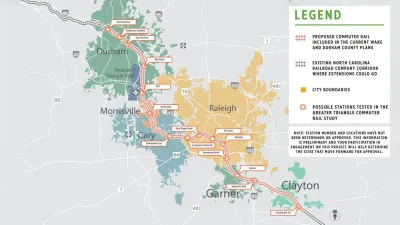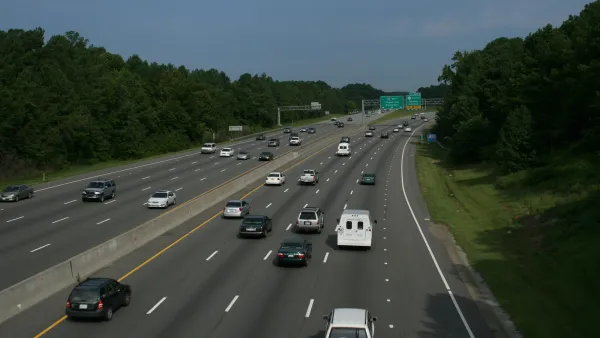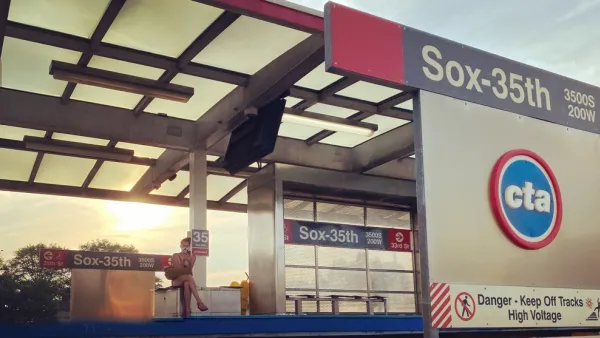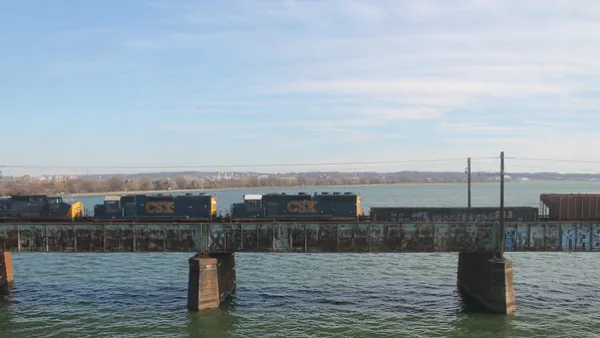As commuter patterns shift, so too do the transit funding preferences of the federal government.

A plan for a commuter rail system connecting the cities of Raleigh, Durham, and Cary in North Carolina, also known as the Triangle, won’t get the funding it needs from the federal government. According to recent reports, the rejection of the plan has everything to do with shifting commute patterns after the Covid-19 pandemic.
“Representatives of the Federal Transit Administration told a group of Triangle leaders that the COVID-19 pandemic has changed how people use transit and that trains that serve morning and evening commuters to central business districts have become outdated,” reports Richard Stradling.
The FTA also told local officials that they would support bus rapid transit (BRT) investments instead. Sig Hutchinson, who heads the board of GoTriangle, the agency leading the commuter rail planning, is paraphrased in the article saying that the FTA will pay for half of qualifying BRT lines.
Construction is already underway on the region’s first BRT route, with plans for more. “The Wake Transit Plan approved by voters in 2016 calls for building four BRT lines radiating out from downtown Raleigh,” reports Stradling. “Construction on the first line along New Bern Avenue east to a park-and-ride lot on New Hope Road is expected to begin by the end of the year, said Het Patel, the city’s transit planning supervisor.”
The Triangle started planning the commuter rail system in 2020, shortly after Duke University helped scuttle a $3.3 billion, 17-mile light rail transit plan in early 2019. The commuter rail plan would have spanned 43 miles and cost $3.2 billion, with stops at 15 stations, according to a “Commuter Rail Feasibility Report” published by Go Triangle in January 2023.
Additional news coverage of the FTA’s rejection of funding for the Triangle’s commuter rail plans is available from Axios Raleigh. “We were told the FTA is no longer funding commuter rail,” Raleigh Mayor Mary-Ann Baldwin told Axios.
FULL STORY: Feds to Triangle: Don’t expect any federal money to build your commuter rail line

National Parks Layoffs Will Cause Communities to Lose Billions
Thousands of essential park workers were laid off this week, just before the busy spring break season.

Retro-silient?: America’s First “Eco-burb,” The Woodlands Turns 50
A master-planned community north of Houston offers lessons on green infrastructure and resilient design, but falls short of its founder’s lofty affordability and walkability goals.

Delivering for America Plan Will Downgrade Mail Service in at Least 49.5 Percent of Zip Codes
Republican and Democrat lawmakers criticize the plan for its disproportionate negative impact on rural communities.

Test News Post 1
This is a summary

Test News Headline 46
Test for the image on the front page.

Balancing Bombs and Butterflies: How the National Guard Protects a Rare Species
The National Guard at Fort Indiantown Gap uses GIS technology and land management strategies to balance military training with conservation efforts, ensuring the survival of the rare eastern regal fritillary butterfly.
Urban Design for Planners 1: Software Tools
This six-course series explores essential urban design concepts using open source software and equips planners with the tools they need to participate fully in the urban design process.
Planning for Universal Design
Learn the tools for implementing Universal Design in planning regulations.
EMC Planning Group, Inc.
Planetizen
Planetizen
Mpact (formerly Rail~Volution)
Great Falls Development Authority, Inc.
HUDs Office of Policy Development and Research
NYU Wagner Graduate School of Public Service





























